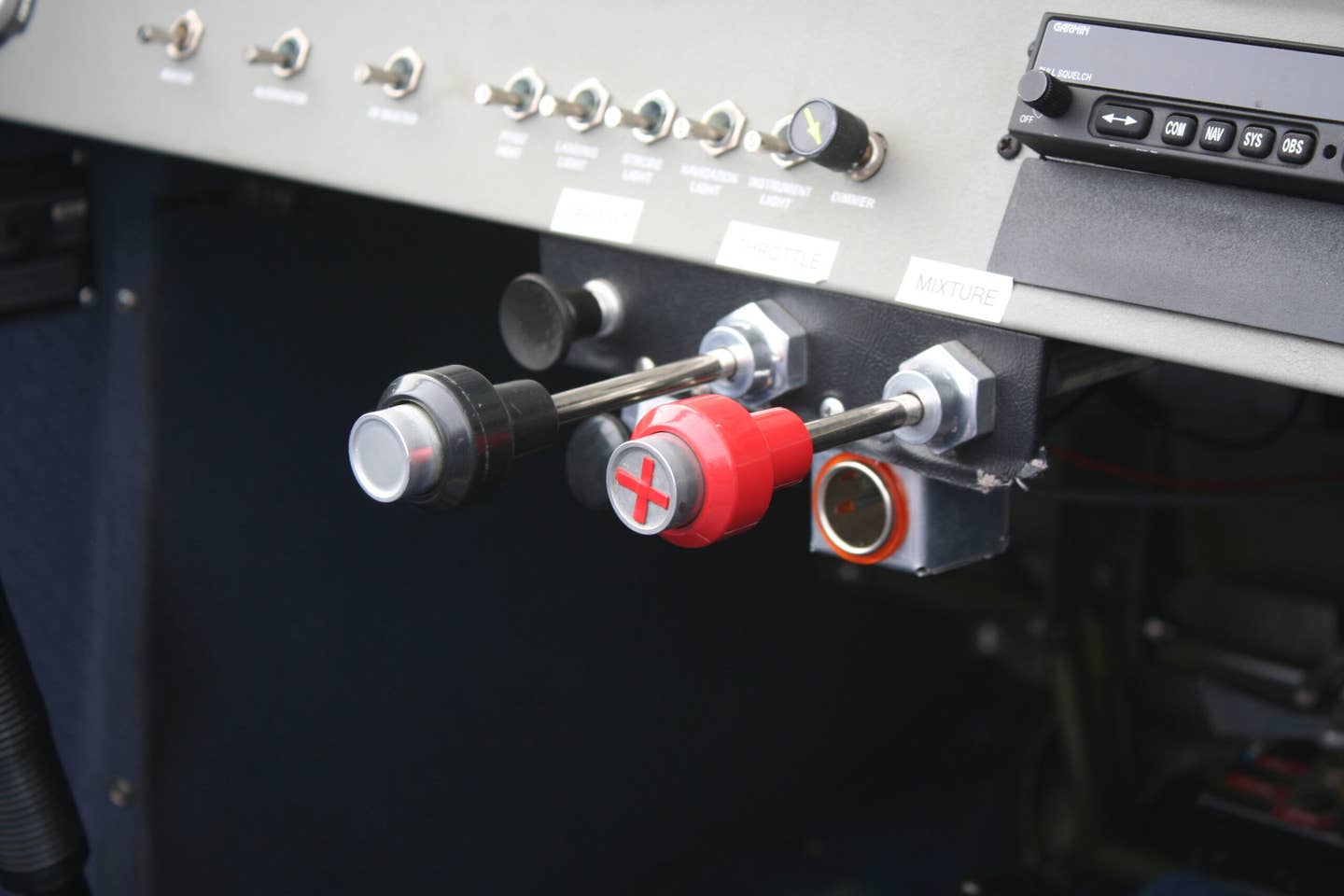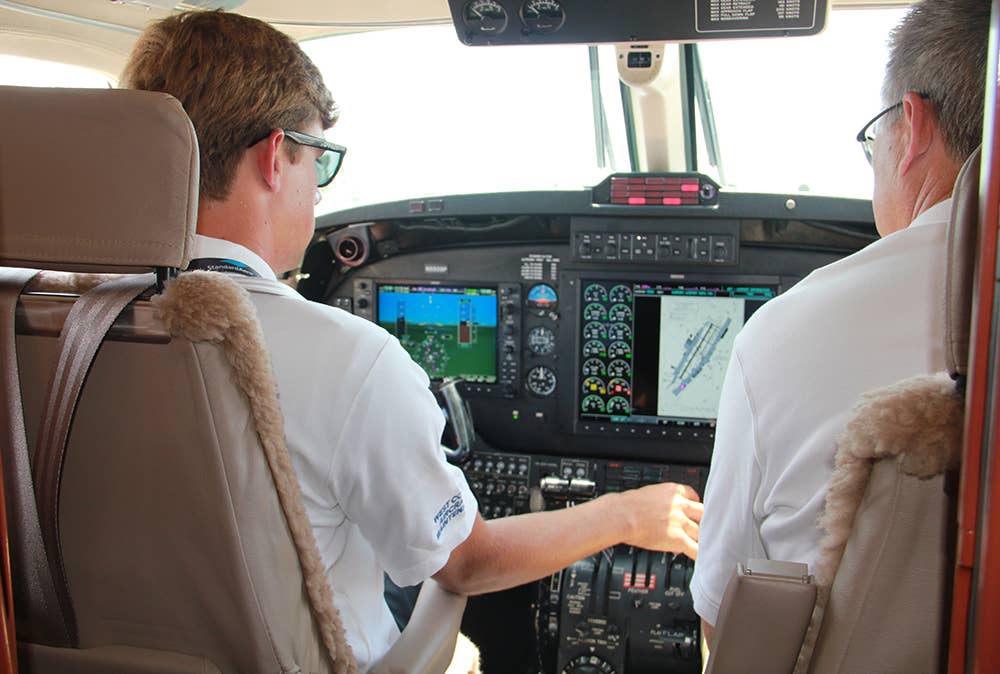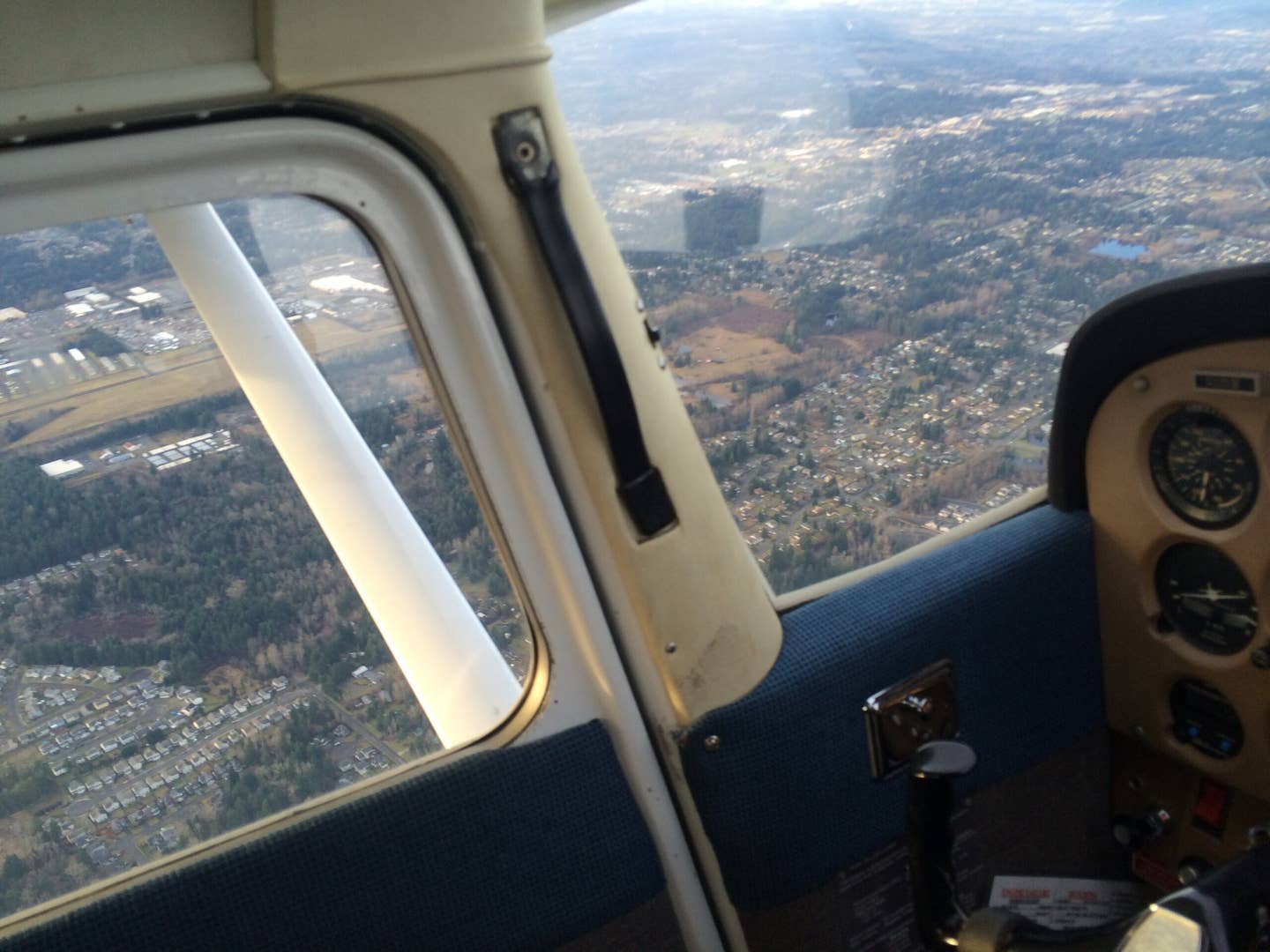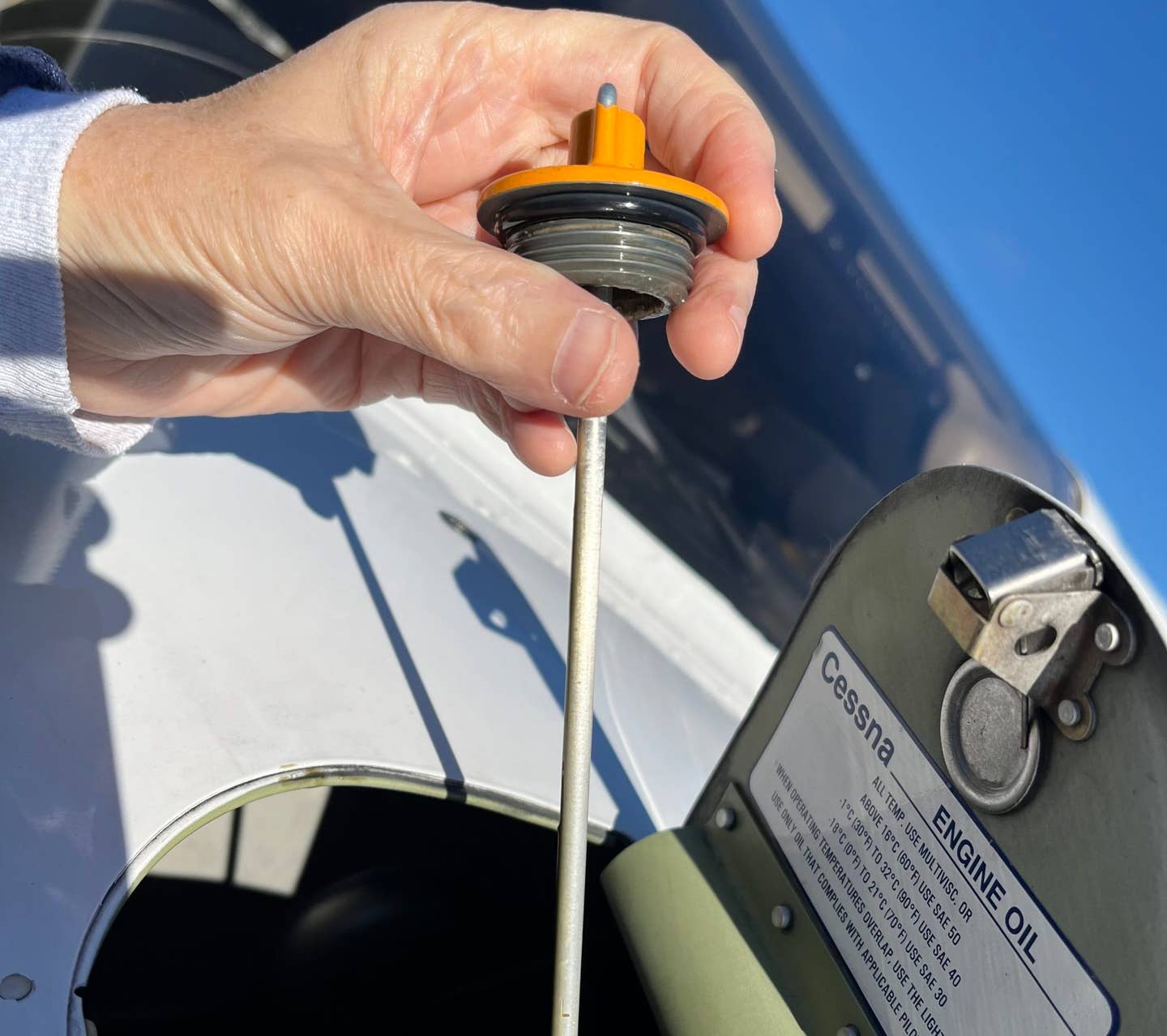The Importance of Following Checklists
Here’s why every pilot should follow established procedures for aircraft engine shutdown.

To shut down the engine, the mixture knob or lever is pulled full aft, with the knob or lever left out. [Courtesy: Meg Godlewski]
"That's not right," said the learner, checklist in hand and pointing at the mixture knob. It was full forward. On shutdown the mixture is pulled full aft, cutting off the fuel supply to the engine.
This was the learner's third flight lesson, and already he had mastered the use of the checklist.
I stood back, silently observing—it appeared someone had not used the checklist when they shut down the aircraft.
To shut down the engine, the mixture knob or lever is pulled full aft, with the knob or lever left out. Yet, looking at this cockpit it was obvious someone had put the knob back in.
As that was not the correct procedure, the learner took extra care with the inspection, calling my attention to several other discrepancies. He found several electrical switches left "on," the most disconcerting of which was the avionics master switch. This aircraft had several placards warning the pilot to make sure the radio was off before activating the avionics master switch and to make sure the avionics master was off before activating the aircraft master switch.
According to the chief mechanic and owner of the Cessna 172, if these procedures were not followed, a surge of power could be sent to the radios, possibly damaging them. Apparently this had happened in the past. In addition to the placards, there was a warning written in all caps and in red on the checklist.
- READ MORE: How to Beat the Summer Heat When Flying
This wasn’t a one-time experience. The mixture knobs in other aircraft were also found in the full rich position. It was obvious someone—perhaps several someones—were not following the checklists.
The flight school was busy, as most of the instructors were flying eight hours per day, and there were multiple student pilots with solo privileges renting the aircraft. The concern of the chief CFI was that the instructors were not teaching checklist use, or worse yet, not demonstrating and modeling proper cockpit procedures. The CFIs were reminded to carefully watch their learners and remind them to use and follow the checklist during each phase of flight.
An email was sent to all the renters and students, asking them to please use the checklists especially on aircraft shutdown. Some of the learners were confused by the email, because they thought the only problem that could arise from an improperly shutdown aircraft was the potential of a "hot prop," the term for the magnetos being left on.
When the magnetos are shut off, the spark is grounded to the airframe. If the magnetos are left on, the spark is not grounded, and there is the possibility the prop can "kick," as in move forcefully on its own if bumped or repositioned by hand. Approach the propeller like it is a big dog you don't know—with caution and respect.
I have seen the aftermath of someone getting hit by a prop. It was at a Saturday morning fly-in pancake breakfast. It was winter and one of those cold, clear days that are so rare in the Pacific Northwest. The owner of the Cessna 172 was moving the prop by hand to a vertical position to signal that he needed fuel.
I was two spots away when I heard the impact. I turned in time to see him on the ground. The engine hadn't started because the mixture was out, but the prop had rotated on its own, coming down rapidly and striking his arm.
Although shaken, he said he was fine, as he was wearing a heavy winter jacket, and it prevented him from getting a serious injury. Or so he thought. A few minutes later he collapsed. We thought he was having a heart attack. He was lucky that several of the people in attendance were paramedics. When they got his jacket off, they discovered his arm was broken— there was bruising and swelling — and determined that he was in shock.
I share this story with my learners. Oddly enough, the one who was skeptical of the damage a live propeller could do was the one who had the ignition key break off during aircraft shutdown. It was the policy of the school to quickly switch to “off,” then back to “both” to determine the mags could be grounded to the airframe, then shut the engine off. As he switched back to both, the key sheared off. The mags were stuck on.
We shut the aircraft down by pulling the mixture full after and depriving the engine of fuel and turned off the master switch. I ran inside to get the chief mechanic while the learner stayed with the airplane, standing behind the strut, and warning his classmates of the potentially live and therefore dangerous prop.
We both watched as the chief mechanic used one of his specialized tools to turn the mags to the off position and removed what was left of the key. As he got out of the aircraft he looked at the student and playfully admonished him: "Go easier on the Wheaties! You're breaking the keys!"
As for the identity of the pilot who was improperly shutting down the aircraft, he was a private candidate who thought he was helping the other pilots by putting the mixture to the "rich" position at the end of the flight because it was on the engine start checklist, and he wanted to save the pilots a step.
After he was educated about the importance of following the checklist, the behavior ceased as learning had taken place.

Sign-up for newsletters & special offers!
Get the latest FLYING stories & special offers delivered directly to your inbox






